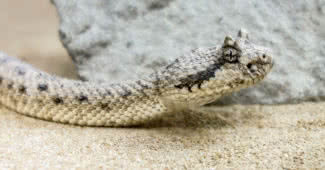Can you imagine living outside in extreme cold conditions without the necessary precautions? But animals living in frigid environments of the Arctic and Antarctic regions have unique adaptations to survive during the harsh winters.
Explore the top 10 animals that thrive in bone-chilling cold conditions and how they have adapted to survive in these unforgiving climates.
10Emperor Penguin
Emperor penguins are native to Antarctica and raise their young on fast ice, a floating platform of frozen ocean that connects to ice shelves. These penguins can withstand extremely low temperatures due to physical and behavioral adaptations. Four layers of overlapping feathers provide excellent protection from wind, and thick fat layers block heat inside the body.
Additionally, these penguins have evolved a small beak, flippers, and feet compared to their main body to prevent excessive heat loss. Emperor penguins also have specially arranged arteries and veins to maintain their body warm. During the four-month egg incubation period, males gather in “huddles” to minimize their body surface exposure to cold air.
9Muskox
In winter, their hooves help them dig through ice and snow to reach food in the valleys. A long, thick outer coat directly protects against extremely cold weather, and a shorter inner coat provides extra insulation. Their large size also makes it easier to maintain their body temperature in frozen environments.
Top 10 Amazingly Adaptive Sahara Desert Animals
8Snow Leopard
With tails reaching 105 cm in length, snow leopards use them to balance and wrap around their bodies for warmth. Their wide paws are covered in fur and act as natural “snowshoes,” distributing their weight over soft snow and protecting them from the cold.
7Reindeer
Two layers of fur provide insulation: an ultra-fine and dense underfur and a shaggy outer layer. The tendons in their foot joints that make a clicking sound help herds keep together in low visibility. Also, reindeer burrow through the snow with their hooves using a cratering technique to retrieve hidden food.
6Beluga Whale
Belugas use echolocation to navigate the waters beneath ice sheets, and their small pectoral fins and tail flukes reduce the surface area and heat loss through these thin body parts. Unlike other whales, belugas have a tough dorsal ridge that allows them to swim easily under ice sheets.
5Arctic Hare
They are loners but can travel in a group to keep watch for predators and huddle together to stay warm. Additionally, Arctic hares use their keen sense of smell to locate food hidden beneath the snow and know exactly where to dig.
4Snowy Owl
The snowy owl is a magnificent bird that inhabits the vast Arctic Tundra. Its distinct round body shape covered in thick white feathers with dark markings insulate the owl from the harsh cold environment. Unlike most birds with bare legs, the snowy owl has feathers covering its legs and feet further helps to keep it warm, and its expanded foot surface prevents the owl from sinking into the snow.
Interestingly, the snowy owl is one of the heaviest species, weighing approximately 1.8 kilos, largely due to its dense coat of feathers. Snowy owls primarily hunt by waiting on the ground for prey rather than flying around searching for it.
3Walrus
In winter, their blood vessels constrict and move blood away from the skin and toward the chief organs, reducing heat loss to the environment. Due to their gregarious nature, walruses seek physical contact with each other to retain body heat without losing it to the external environment.
2Arctic Fox
Interestingly, this fur changes color to white during winter, serving as a defense mechanism against predators in snowy surroundings. The fox also has thick fur on its paws, allowing it to easily walk on snow and ice. In winter, the fox reduces its metabolic rate and locomotor activities to conserve fat to survive the long and harsh winter.
Related Articles
1Polar Bear
Their flat paws act as snowshoes and swimming paddles. They have excellent hearing, a keen sense of smell, and acute eyesight, which help them trace their prey even in the winter darkness. They use the ice as a platform to track and prey upon seals. When food is short, they can slow their metabolism for survival.




